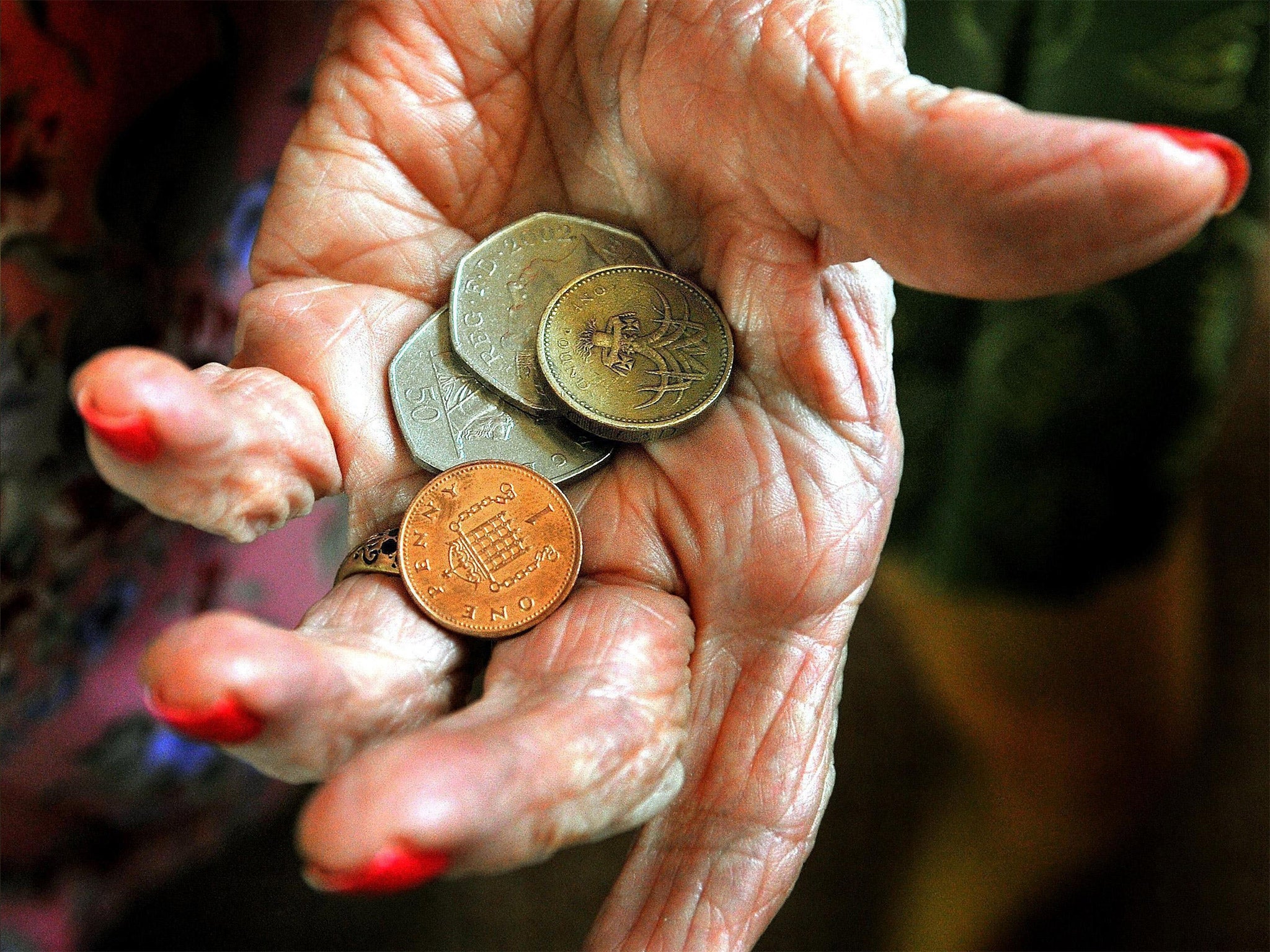Pension credit cuts linked to increase in death rates of over 85s, study claims
A sudden rise in elderly mortality five years ago could be result of austerity measures

Government cuts to pension credits may have been a factor in a sharp increase in death rates among the over 85s under the Coalition Government, a study has claimed.
Official statistics show that long-term declines in annual death rates among the age group have begun to reverse again since 2011.
Public health experts have called for an official investigation into the phenomenon, which has been variously blamed on a range of factors, ranging from cuts to elderly care services to weather, flu rates, or even ordinary fluctuation.
However, researchers from four respected universities have now suggested a new explanation, revealing an apparent link between cuts to spending on pension credits – benefit payments for pensioners on low incomes – between 2011 and 2013, and an increase in death rates over the same period.
The impact on the incomes of elderly people could have caused increased anxiety, raising the risk of heart attack and stroke, or could have affected food or heating payments, leaving elderly people more vulnerable to illness, the researchers, led by Dr Rachel Loopstra at the University of Oxford, claimed.
A spokesperson for the Department of Work and Pensions called the study was “completely misleading” but the researchers said it was “biologically plausible” to link welfare payments to death rates, noting that the introduction of the winter fuel allowance in the 1990s corresponded with a decline in excess winter mortality.
In their paper, published in the Journal of the Royal Society of Medicine, the researchers describe how a drop in pension credit spending in 2012 corresponded to a 1.4 per cent rise in death rates among over 85s, and a drop in the numbers receiving pension credit in this year corresponded to a 2.7 per cent increase in death rates.
Average pension credit spending fell by only a small amount, from £2,482 per claimant per year in 2011 to £2,349 in 2013, but the researchers claimed that, for the poorest pensioners, a change “of even a few pounds could make a considerable difference to disposable income”.
If death rates in 2013 had been the same in 2010, there would have been around 10,000 fewer deaths, the researchers said, many of which they claimed may be attributable to cuts to pension credits.
The national death rate for England and Wales increased for the first time since the early 1990s in 2011. It continued to rise until 2014, when there was a small decline. However, last year saw the biggest one-year increase for several decades.
Public health experts have called for a full investigation. However, Public Health England has said that the number of deaths “fluctuate considerably from year to year and have done for decades”.
The claim that cuts to pension benefits could be a factor will prove highly controversial.
Dr Loopstra, from Oxford’s Department of Sociology said: ‘It is widely believed that pensioners have been spared from austerity measures. But the data suggests that, especially for low-income pensioners, support has been cut and eligibility tightened and these cuts may have been linked to rising mortality in this vulnerable population.”
And Professor Martin McKee, from the London School of Hygiene & Tropical Medicine, who also contributed to study, added: ‘The narrow focus on the state pension in policy debates has obscured how austerity measures may have negatively affected low-income, older pensioners.”
Pension Credit is an income-related benefit made of two parts: guarantee credit, which tops up weekly income to a guaranteed minimum level, and a smaller component called savings credit.
About four million older people are entitled to pension credit, yet about 1 in 3 of those eligible are not claiming it. Guarantee Credit tops up your weekly income to £151.20 for single pensioners whose income are below this level and to £230.85 for couples.
While conceding that spending on savings credits has decreased slightly, the Department for Work and Pensions said that pensioners on the lowest incomes would have been protected by annual increases in the minimum income guarantee in line with earnings growth.
A DWP spokesman said: “It’s completely misleading to link these figures. The truth is that minimum income from Pension Credit has increased every year in line with earnings or more.
“And we have continued to protect pensioner incomes by safeguarding the triple lock and maintaining universal benefits such as winter fuel payments.”
Subscribe to Independent Premium to bookmark this article
Want to bookmark your favourite articles and stories to read or reference later? Start your Independent Premium subscription today.

Join our commenting forum
Join thought-provoking conversations, follow other Independent readers and see their replies